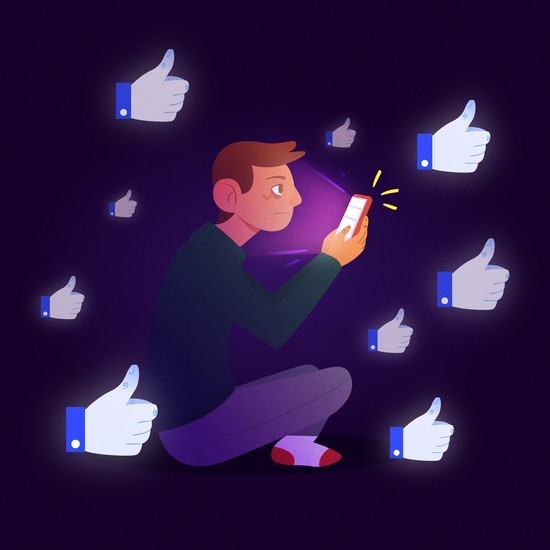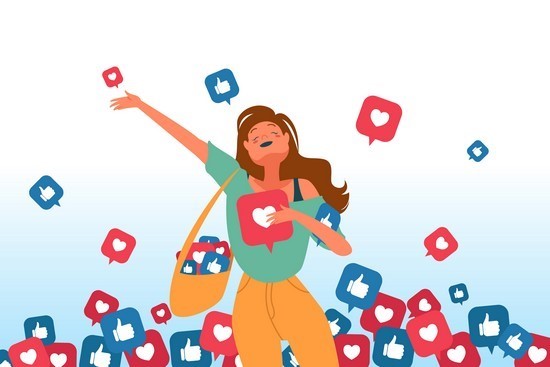AMMAN – If you ask any parent today what one of their biggest fears
for their children is, many will point to exposure to technology, which
affects them developmentally. The way technology impedes the naturally stunning
pace at which
children pick up social and cognitive skills can only be
described as a nightmare. And while we must worry about what spending hours
playing on mom’s
iPad will do to a five-year-old, we cannot forget about how
our teenagers’ use of technology is affecting their equally important period of
rapid development.
اضافة اعلان
There are 4.55 billion active social media users today, with surveys
suggesting that over 90 percent of teenagers use social media, and over 50
percent of them use it on daily basis.
Regrettably, the pandemic brought our worries to ominously high levels.
The world went into
lockdown and schools shifted to online learning for almost
a year and a half. Suddenly, the one shred of hope our teenagers had about
forming real-life friendships, developing their communication skills, and experiencing
all the joys and pitfalls of being in a school environment that afforded them
the opportunity to make conversation while looking a person in the eye was
taken away.
The government’s inconsistent shifting between in-person and online
learning, the lack of assurance and routine has rendered teenagers helpless to
the irresistible façade of social media and the fleeting serotonin boost of
seeing a notification about yet another like on their post.
Nowadays, teens have mastered the art of keeping themselves occupied online
throughout the many hours that they have throughout the day, until way past
their bedtime, whether by texting, scrolling, watching, playing, or sharing. Even
before
TikTok and
Instagram teens would also keep themselves busy by spending
their free time either chatting on the phone or just hanging out at a mall or at
a restaurant. And while it may have looked like they were aimlessly walking
around or were having meaningless conversations, what they were actually doing
was picking up on social cues, which we, the human species, are naturally
highly attuned to do.
 Addiction to social media has hindered teenagers’ ability to learn social and communication skills. (Photo: freepik)
Addiction to social media has hindered teenagers’ ability to learn social and communication skills. (Photo: freepik)
They were experiencing real-life awkward situations and either failing
or succeeding at
social interactions; they were learning all the social skills
necessary that modern teens are missing out on. The art of communication that was
once learned through looking another person in the eyes has now regressed to
reading their texts on a screen.
According to clinical psychologist and author of “The Big Disconnect” Catherine Steiner-Adair, “in a way,
texting and online communicating — it is not like it creates a nonverbal
learning disability, but it puts everybody in a nonverbal disabled context,
where body language, facial expression and even the smallest kinds of vocal
reactions are rendered invisible”.
Going by the 93/7 rule, which suggests that the vast majority of
communication is non-verbal, you can see how this presents a huge challenge for
these adolescents and for everyone around them trying to communicate with them
face to face.
The biggest loss here, however, is learning to identify emotions
exchanged in conversation. Because when you are in conversation with someone,
you rely mostly on the nonverbal aspects of it to be able to indicate your
emotions to them and, likewise, to be able to identify the emotions emitted by them
to you.
Social media have hindered this ability, significantly making it more
difficult to respond or react appropriately, causing confusion to the
participants in the conversation who are relying on texts and “emojis” that can
be easily interpreted differently because they do not convey the full palette
of facial expressions, voice inflictions, and body language.
 (Photo: freepik)
(Photo: freepik)
Because teenagers are now completely consumed by the thought of
garnering as many views and likes and interactions on their posts, picking up
their phones every other minute to check their statuses, they forget to
interact with the people sitting opposite them. Which leads to their familial
relations, friendships, and dating
relationships suffering tremendously as they
begin to lack authenticity and deep value, with social media now taking centre
stage in a teenager’s life rather than simply being used as a tool to enhance
their real-life relationships.
The risks of excessive social media use are already well documented in
literature, be it increased levels of anxiety, depression, eating disorders, or
even becoming more susceptible to peer pressure and cyberbullying. An online survey
carried by the University of Malaysia on the relationship between social media
usage and anxiety among
Jordanian youth found that Jordanian youth’s addiction to social media has
increased and has affected their mental health significantly. Multiple longitudinal
studies even found a connection between
adolescents, social media use, and an increase in suicide risks.
Neither can we forget all the associated health risks that come with
excessive social media use, starting with sleep deprivation. According to a
British study published in the Journal of Youth Studies, one-fifth of
teen participants said that they were “almost always” awake throughout the
night, scrolling through social media. This snowballs into increased moodiness,
a drop in academic and physical performance, with some studies even linking
increased screen time to the development of
ADHD symptoms
such as inattention, hyperactivity, and emotional regulation.
Ultimately, the responsibility of utilizing social media positively and as
a means of developing new skills and building a positive digital footprint
falls on the shoulders of pretty much everyone today.
 (Photo: freepik)
(Photo: freepik)
However, the vast majority of this burden will fall on parents who have the
massive responsibility of guiding their children in an understanding and loving
manner rather than by villainizing and placing all the blame on their
teenagers.
Parents must stop making social media a battleground, and rather utilize their
authority in a helpful manner to minimize its damages.
Do not let taboo get in the way of having open and honest discussions
about the harmful effects of social media. Even out the power dynamics by
asking for the children’s opinion and help empower them to do good with social
media.
Another important step to take is to stay informed and up to date with
whatever is new on social media. Most importantly, set a good example to your
teenagers who when seeing that rules such as screen time are only applying to
them are less likely to be motivated to follow them.
This is a generation of adolescents that has fallen victim to a vicious
cycle of avoiding real-life interactions due to their deteriorating
mental health, all while their brains are still developing. We need to show them that
when we navigate the world of social media together, their world, whether
online on real-life, will become much more manageable.
Read more Education



